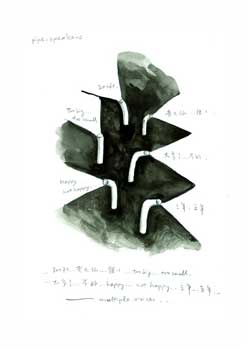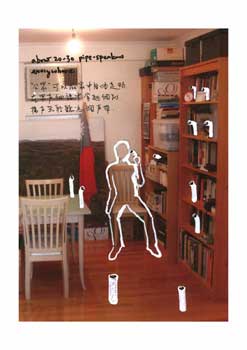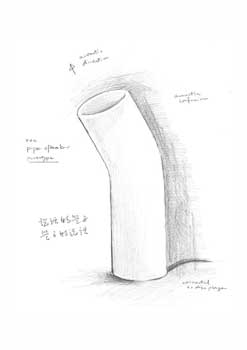30-channel sound installation at private residence, 2007
Since 2004, I have visited Hong Kong people’s home, from cheap rent-public housing to expensive apartment on the Peak for the photo project Domestica Invisibile which explores the living space of the people of the city and their intimate relations with it. About 40 places have been visited.
In addition to collecting images of corners of their home, I also talked to them and made recordings of their monologues about reality and ideas of living there. These soundtracks are stories of individuals and also somehow constitute certain collectiveness (and diversities) of the city that we all live in.
A sound installation was specially produced in the home of critic Jaspar Lau Kin Wah who named his home for art as mMK. 30 monologues, all recorded in Hong Kong with one third in English and the rest in Cantonese, of different people talking about their home will be played in the living room of this small flat in Kwun Tong of East Kowloon for the unique exhibiting context.
Each channel was played in very low volume and an atmospheric effect of whispering was created altogether. Acoustic devices made of PVC pipes were used to direct visitors to different soundtracks. This project was viewed by appointment only and Jaspar Lau as the host was also visited.
Concept Drawings (Click to enlarge)
 |
 |
 |
|---|---|---|
| Concept Drawing A | Concept Drawing B | Concept Drawing C |
Artist Statement
It is already the second time I have tried to implement this idea to integrate the exhibiting context and the exhibits. I just take a very straightforward however not so easy approach – concerning the issue of living space, why not dealing it right here in the living space, for both the artist and the audience.
The first time was in Sapporo in 2005. Although I could manage to visit people in their privacy after many efforts, it was just too difficult to borrow someone’s home for exhibition. Finally it was not really open home in a narrow sense as the venue was the apartment where I only lived in for two months and could hardly call it home. Nevertheless, I did get that domestic environment which provided the context for contemplating the project. The flat was minimally furnished and the installation was also minimal. The winter there was cold and outside the window was full of snow. The whispering effects from the sound recordings played in this flat was such a sharp contrast, especially when few people in it.
One and a half years later, in the same format, slightly adjusted and a larger scale, Open Home was now produced with all Hong Kong recordings, most of which were actually made earlier than those in Japan. The words “Hong Kong version” marked in the press release perhaps confuses the originality of the present production. Instead of coining the Japan production as the “trial version” to clarify its chronological order, it was in Sapporo that I discovered the element of sound in this project simply because I did not understand any single word in all the recorded Japanese monologues.
Back to that idea of living space, Open Home is not really about understanding how people live in their place (although that would be the first thing most audience can learn from this work). There can be also the issues of misunderstanding, perception, association and fantasy, etc., I think. Or, the living space may be just a platform to see our relationship with immediate surroundings as it provides the basic vocabulary of self, others, affiliation and possession such as home, family, household and belongings, etc.
Then there could be also the notions(or even dichotomies unfortunately) of “public vs private”, “individual vs institution” and “conventional vs alternative”….to be elaborated from this presentation. But I would like to leave them here since they are only the discoveries in my project-in-progress but not any statement or conclusion.
Later on, a specially compiled 2-channel audio version of Open Home (Hong Kong) was made for headset listening.